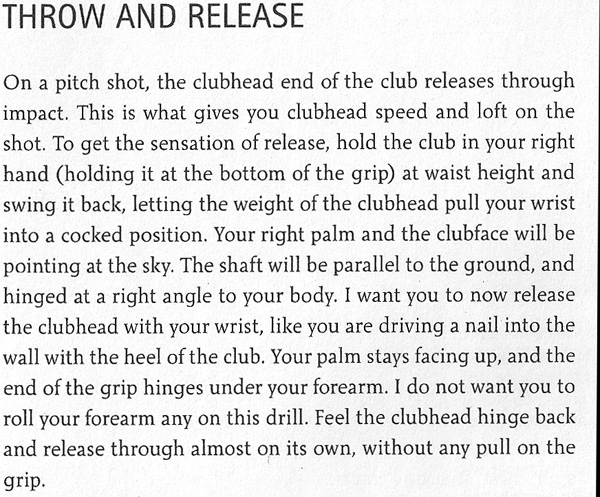There are so many techniques for shots around the green, and I don’t think any of us amateur or pro could ever know and properly execute all ways of playing short game shots.
One of the things I have really learned this last year after my substantial lay off from the game, is that being a full time golfer or professional on tour… you have a lot of time practice, and with enough practice, you can make a lot of undesirable techniques work. Too much time can be a bad thing!
In the last year, I had to take a serious look at my short game in general, because after not playing for 15 years, I could still strike the ball reasonable well because I have very good technique. On the other hand, my short game was quite awful by profession standards. So realizing that I am only going to be a once a week golfer now… I needed to figure out how I could work better technique into my game, so that practice could be put aside, and my short game could remain reasonably presentable even to my own standards of excellence. I really needed to only look to the principles I was apply in my long game…
A more compact aggressive accelerating strike with firm hands actively hitting the golf ball.
As a touring pro, I was a very soft handed feel player around the greens and stuck with this technique, which as I know now… required lots of constant attention. I was a hitter tee to green, but a swinger around the greens. This was fine as long as I could grind balls, and chip lots of shag balls… but the problem I had was that at some point… somewhere between chipping and wedges was a strange zone where hitting and swinging would meet with very bad results. Once I learned to “HIT” chips, this really worked well and cleaned up my wedge play considerably. Now my game feels a perfect unity from putter to driver.
I changed my putting and my putter also to embrace the same ideology. I really think this is what you see with great players.
A consistent look and feel in general from tee to green. Think about Tom Watson… Crenshaw or even Trevino.
My basic thought on chipping now is that the longer and slower you move the club, the more feel and intuition is required.
You have to be able to guess what the grass is going to do. I mean the grass, the lie, the combination of the grass and lie.
The thing I have really learned is that if you accelerate the club really firmly through the ball… it takes a lot of the guess work out of it. So if you can learn the more universal feel of a an extremely accelerating compact chipping method… to get a feel for your distances this way… I think it’s really great stuff… very little practice needed to maintain it… once you get the basic feel of it.
I showed the technique to two students here, ballturf and david_wagner, so it might be good to ask them to chime in about it for verification… good or bad!
I’ll talk about my special sand wedge method here later…
